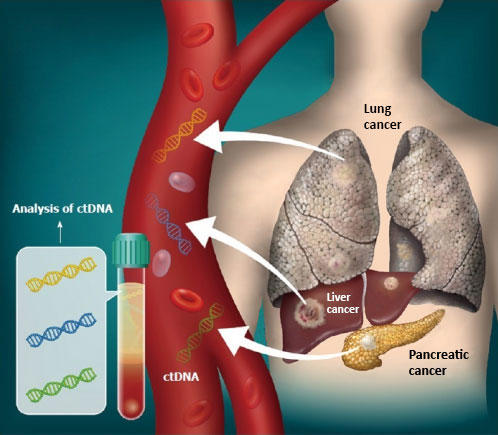Yang Zhang, PhD, and Jinjun Shi, PhD, both of the Center for Nanomedicine and Department of Anesthesiology, Perioperative and Pain Medicine at Brigham and Women's Hospital, are co-senior authors of a paper published in ACS Nanoscience Au, " Lipid Nanoparticle Delivery of mRNA and siRNA for Concurrent Restoration of Tumor Suppressor and Inhibition of Tumorigenic Driver in Prostate Cancer ."
How would you summarize your study for a lay audience?
Most cancers occur when there is an imbalance of cellular growth and inhibition, causing cells to grow rapidly and form tumors in the body. For example, advanced prostate cancer (PCa) is often linked to changes in the activity of a tumor suppressor, called phosphatase and tensin homologue deleted on chromosome 10 (PTEN), and a widely studied pro-tumorigenic transcription factor, called androgen receptor (AR). However, no therapies exist to simultaneously correct tumor growth and restore tumor suppression for patients with PCa.
Using a novel, RNA-based approach, we sought to restore this balance in cancer therapies for patients with PCa. This approach was successful in preclinical models, holding promise for suppressing tumor growth in patients.
What question were you investigating?
We hypothesized that using mRNA and siRNA simultaneously could restore tumor suppressors and inhibit drivers of tumor growth, such as PTEN and AR respectively, in patients with PCa.
What methods did you use?
We used lipid nanoparticles to deliver mRNA and siRNA to human PCa cells to evaluate our technique's ability to both restore the lost PTEN and silence the overexpressed AR.
What did you find?
We saw a powerful, combined anti-tumor effect when PCa cells were administered the mRNA and siRNA nanoparticles.
What are the implications?
Our strategy could also apply to other drivers of tumor growth and tumor suppressors in prostate cancer and other types of cancer, such as breast cancer, non-small cell lung cancer and hepatocellular carcinoma. If we carefully select specific pathways to target that relate to tumor growth and suppression, this strategy holds potential for developing more effective treatments for many cancers.
What are the next steps?
We will expand this approach to assess its effectiveness in other types of cancer. We also plan to further explore the biological mechanisms underlying the combined effects we observed, which may lead to the discovery of new, potent therapeutic targets for PCa.
Authorship: In addition to Zhang and Shi, Mass General Brigham authors include Ryan A. Farokhzad, Jing Luo and Li Jia.
Paper cited: Farokhzad R et al. "Lipid Nanoparticle Delivery of mRNA and siRNA for Concurrent Restoration of Tumor Suppressor and Inhibition of Tumorigenic Driver in Prostate Cancer." ACS Nanoscience Au DOI: 10.1021/acsnanoscienceau.4c00066
Funding: Supported by the National Institutes of Health (R01CA200900 and R01CA262524).
Disclosures: N/A






